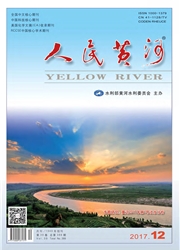

 中文摘要:
中文摘要:
综合20世纪90年代山东省海岛资源综合调查及2005年海岛专项调查结果数据,研究20世纪90年代以来黄河三角洲北部地区泥沙质海岛的变化,并分析了其变化的驱动力及其对社会经济的影响。结果表明,该区域海岛在此期间数量、面积上都发生了较大变化,海岛总数由89个减少到47个,总面积由33.79 km2减少到5.62 km2,其中消失的海岛主要集中在土地被改造为盐田、养殖池的区域。泥沙质海岛的变化,主要受人类修建盐田、养殖池等土地开发利用活动的影响,黄河入海泥沙变化导致的陆源物质减少、气候变化导致的极端天气增加、区域沉降及海平面上升,亦是其变化的原因。泥沙质海岛的变化,减少了土地资源量,加剧了风暴潮灾害的后果,并改变了地下水的贮存条件,对社会经济产生不利影响。在综合该地区海岛特点及变化规律的基础上,对海岛保护、开发及利用提出了建议。
 英文摘要:
英文摘要:
We used the data from island resources investigation in 1990s and 908 island special investigation,to analyze the changes of the sedi-ment islands in the north of the Yellow River delta since 1990s. The driving force and its impacts on human activity were also analyzed. The result shows that the quantity and area of the islands have been changed greatly during this time,the number of the islands changes from 89 to 47,the to-tal area of the islands changes from 33. 79 km2 to 5. 62 km2 . The disappeared islands located mainly in the region that has been converted into salt evaporation ponds and culture ponds. The changes of the islands are mainly impacted by human activity such as construction of salt evaporation ponds and culture ponds. Decrease of the terrigenous matter due to the changes of the Yellow River flux,increase of extreme weather lead from global climate changes,regional subsidence and sea-level rise are also its reasons. The changes of the sediment islands have reduced the land re-source,exacerbated the storm surge disasters and changed the groundwater storage conditions,bringing harmful to the human economy. At the end, the characteristics and changing rules of the island is synthesized,and advices on the protection,development and utilization of the island are pres-ented.
 同期刊论文项目
同期刊论文项目
 同项目期刊论文
同项目期刊论文
 Clay-sized sediment provenance change in the northern Okinawa Trough since 22 kyr BP and its paleoen
Clay-sized sediment provenance change in the northern Okinawa Trough since 22 kyr BP and its paleoen 期刊信息
期刊信息
